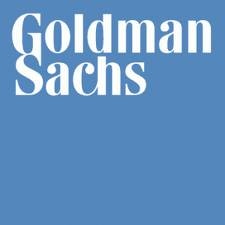I have been bullish about gold since 2005. I bought a ton (figuratively speaking) of gold at $550 and kept adding small amounts as the price reached $1000. It isn’t easy to build a valuation model that can accurately estimate gold prices. I haven’t seen any good gold valuation models either so I decided to do it myself. Most of the analysis I read about gold talk about gold prices in terms of US dollar. This unnecessarily introduces an additional variable in our models: US dollar. On August 24th 1979 an ounce of gold was $315. Twenty years later, on August 25th 1999, the same ounce of gold could be bought for only $252. However, this doesn’t mean that gold lost 20% of its value in 20 years. It just means that US dollar appreciated significantly during those 20 years. It doesn’t make sense to let the fluctuations in the value of dollar contaminate our analysis, so I will take it out of the equation.

Gold isn’t really a commodity, it is a currency. Gold doesn’t pay any dividends or generate any income. It’s just a piece of shiny metal, deriving its value from people’s expectations and its relative scarcity. There are currently more than 160,000 tons of gold held by investors and institutions. On top of that, every year 2,300 tons of gold are extracted by miners. So the total amount of gold in “circulation” increases by about 1.5% annually. Since gold is a currency, we can have an idea about its value by looking at the prices of commodities in terms of an ounce of gold. We will use two commodity indices to get the commodity prices: S&P Goldman Sachs Commodity Index (GSCI) and Thomson Reuters Equal Weight Continuous Commodity Index (CCI). GSCI is heavily weighted towards energy: 80% energy, 10% agriculture, 6% industrial metals, and 2% precious metals. CCI is evenly distributed: 18% energy, 24% metals, 29% soft commodities, and 29% agriculture.
As of March 23, 2012, the gold-price-to-GSCI ratio is 2.37, 25% lower than its peak of 3.18 on February 23, 2009 but still 35% higher than its historical average of 1.75. On September 15th 2008, this ratio stood at 1.26. Personally I don’t like this commodity index because it is heavily weighted towards oil prices which can be quite volatile because of fears about supply disruptions or other political events. Investors use oil as a hedge or as an inflation play too. We think oil is also overpriced at this moment. Nevertheless, gold is 35% overvalued with respect to oil.
We prefer CCI as an indicator of commodity prices. As of March 23, 2012, the gold-price-to-CCI ratio is 2.89, 4% lower than its peak of 3.02 on December 7, 2011 and 74% higher than its historical average of 1.66. Commodity prices should go down over time because of productivity increases. The average annual productivity growth rate in agriculture is around 1.6%. The average annual productivity growth rate in mining is around 1.8%. The average annual productivity growth for oil and natural gas industries has been around -1% for a very long time. This partly explains why gold is less overvalued compared to GSCI which is heavily weighted towards energy prices. Considering that the average productivity increase in commodity production is similar to the average annual increase in the total amount of gold in circulation CCI is a much better index to gauge the relative value of gold.
The interesting thing about the gold price-CCI ratio is that it stood at 1.66 on September 15th 2008, the day Lehman Brothers collapsed. The ratios historical average is also 1.66. This tells us that gold was fairly valued before the financial crisis. After that investors started looking at instruments to protect themselves from devaluations in fiat currencies. Gold was the most practical alternative. It is relatively easy and less costly to store it and the gold market is very liquid compared to most commodities. That’s why David Einhorn invested in physical gold. Billionaires John Paulson, Stephen Mandel, and Leon Cooperman picked Gold ETF (AMEX: GLD) over physical gold which has a low expense ratio of 0.4%. The gold supply is inelastic, so the huge increase in demand resulted in a bubble right now. However, this doesn’t necessarily mean that gold prices have to go down. If the Fed doesn’t know when to stop gold prices may still go up. We also don’t know when this bubble will pop. So, our prediction is that gold will underperform the CCI over the next 5-10 years. If you want to protect yourself against inflation, your best bet would be buying a basket of commodities.

